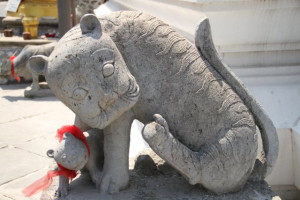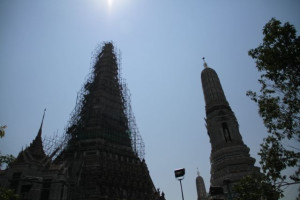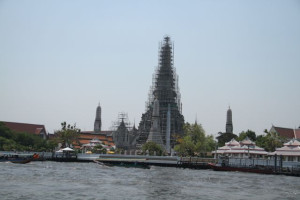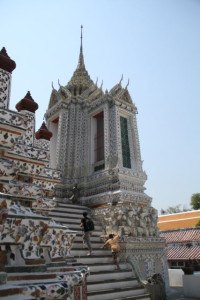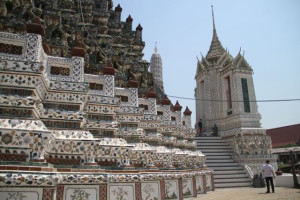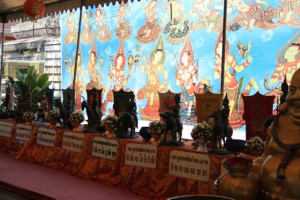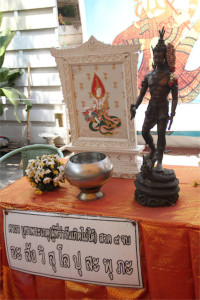This impressive Buddhist temple located at the west bank of Chao Phraya River facing the Royal Palace is unique among other Buddhist temples in Bangkok for its Hindu connections, expressed most remarkably in cosmological and astral terms. The name Arun comes from the Sanskrit aruṇa meaning the reddish glow of the rising Sun. The overall layout is modeled upon the Indian universe, with the mythical Mount Meru in its center, surrounded by realms and continents inhabited by gods, humans and other sentient beings.
Like in many Thai Buddhist temples, planetary deities were installed for believers to gain favors or avert bad luck from their birthday deity. The belief based on the planetary weekday originated in Hellenistic Egypt, developed further in India during the early centuries of the common era, and was transmitted to the rest of East and Southeast Asia by the latter half of the millennium. The planetary deities in Wat Arun retain their Hindu flavors, with Sunday to Saturday represented by the Sun, Moon and so on. The additional pseudoplanets Rāhu and Ketu were represented by a serpent-like figure. As it is common to Southeast Asia, Rāhu represent Wednesday evening; Ketu does not fit into the general scheme and is said to be fit for worship by those who do not remember their birthday weekday.
In this temple, one finds also various Chinese elements which were likely added later. These include Chinese deities, most notably the guardian god and the twelve animals which representing the twelve directions.
